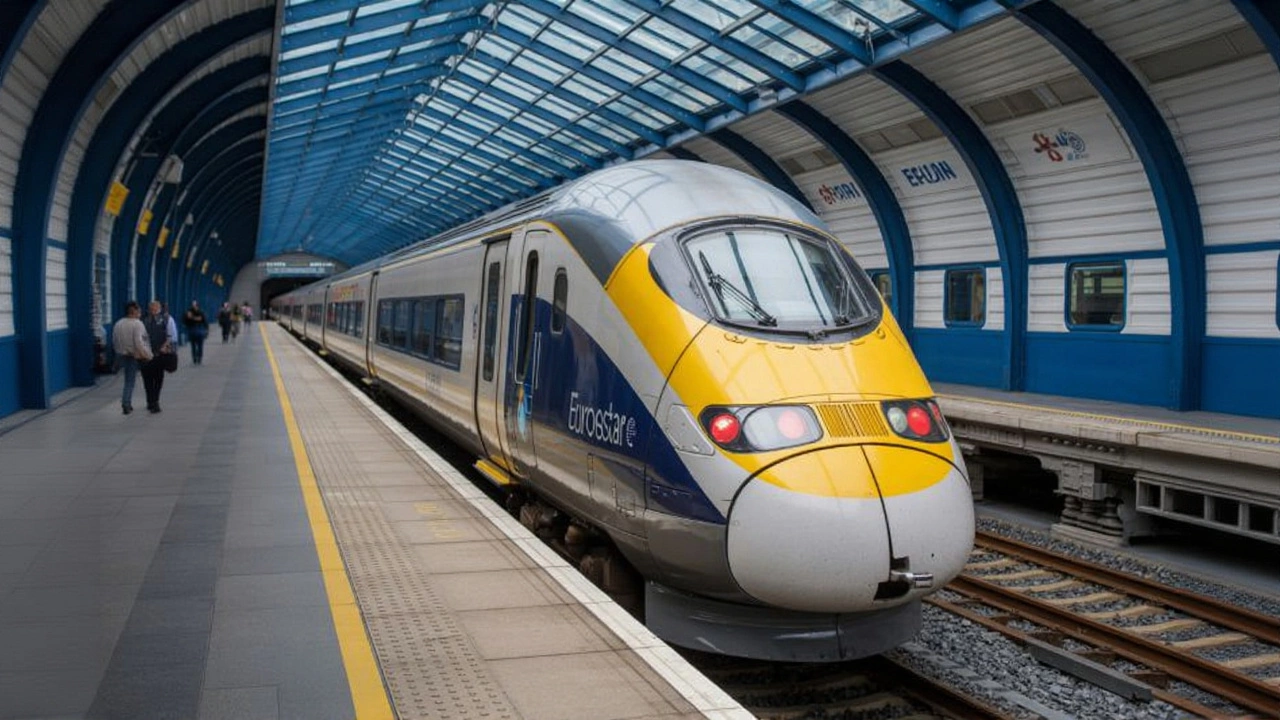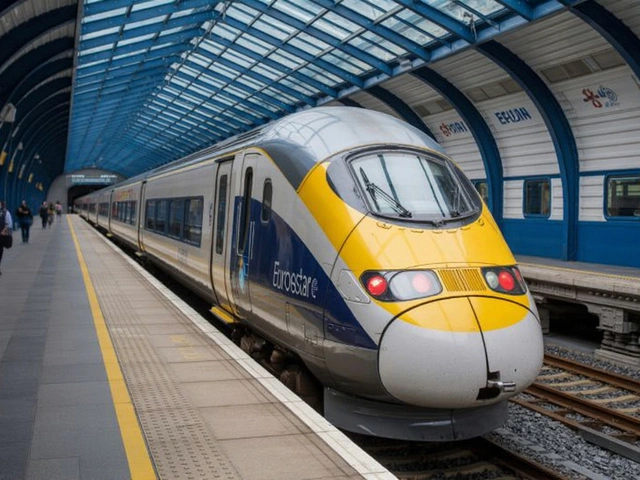
When Eurostar International Limited announced a €2 billion order for 30 new double‑decker trains on 23 October 2025, the rail world sat up straight.
The deal, inked with French rail giant Alstom, will see the first “Eurostar Celestia” units roll out in May 2031, five and a half years after the signing.
Why the fleet matters
Eurostar already runs 17 Class e320 sets on its London‑Paris‑Brussels‑Amsterdam corridor. Adding the new double‑deckers nudges the total to 67 trainsets – a roughly 30 % jump in capacity. Each Celestia can hold 540 passengers in a 200‑metre configuration; link two together and the 400‑metre formation seats 1,080 people. That’s enough to fill a small stadium.
"We’re not just buying more seats – we’re buying future‑proof flexibility," said Olivier Roussel, Chief Executive Officer of Eurostar International Limited. "The Celestia platform lets us add new destinations without overcrowding our existing services."
From London to Frankfurt and Geneva
Beyond capacity, the new trains open the door to longer, direct routes. Eurostar plans to launch services to Frankfurt in Germany and Geneva in Switzerland, joining the current Paris‑Amsterdam‑Brussels line‑up. The 400‑metre double‑deckers are engineered to meet the varied signalling standards of the UK, France, Germany, the Netherlands and Switzerland.
"Europe’s high‑speed network is a patchwork, but Alstom’s Avelio Horizon platform is designed for exactly this kind of cross‑border interoperability," noted Sébastien Cravedi, CEO of Alstom. "We’re proud to see Eurostar take the lead in re‑introducing double‑deckers to the Channel corridor."
The competitive pressure building at the Channel
Eurostar’s bold move comes as at least four new operators signal intent to challenge its dominance. Virgin Group floated a rival service in late 2023, while start‑ups Evolyn and Gemini Trains (the latter eyeing an Uber‑branded offering) have filed provisional routes. Italy’s Trenitalia also filed a claim to run London‑Milan services.
All of these hopefuls need access to the Temple Mills depot in London, the only facility currently dedicated to Eurostar’s rolling stock. The Office of Rail and Road (ORR) is expected to rule on a shared‑use application before the end of October 2025.
"The depot question is a classic case of capacity vs competition," said Margaret Ellis, Spokesperson for the ORR. "We’ll weigh the operational safety of adding third‑party trains against the benefits of a more competitive market."
Sustainability, finance and the long‑haul timeline
Eurostar’s €2 billion spend underscores a belief that rail will stay the green champion of inter‑European travel, even though the precise carbon‑reduction figures for the Celestia design were not disclosed. Alstom promises a 20 % improvement in energy efficiency over the current e320 fleet, thanks to lighter aluminium car bodies and regenerative braking.
The financing is a mix of Eurostar’s cash reserves, a €1.2 billion loan from a consortium of European banks, and a €500 million bond issued on the London Stock Exchange. Allianz Global Assistance, the FCA‑regulated insurer that backs Eurostar’s financial health, will underwrite part of the credit risk.
Delivery will be staggered: the first ten units are slated for late 2029, with the full batch arriving by early 2032. Certification work is already under way in both the UK’s Office of Rail and Road and France’s Autorité de Régulation des Transports (ART), a process that often takes three to four years for high‑speed cross‑border stock.
What passengers can expect
- Exterior livery dubbed “Millennial grey”, with bold London‑Paris branding on opposite sides of the train.
- Spacious upper‑deck lounge areas equipped with Wi‑Fi, power outlets, and a new on‑board café concept.
- Dedicated families‑zone cabins with flexible seating for strollers and wheelchairs.
- Advanced noise‑reduction glazing to keep the cabin whisper‑quiet even at 300 km/h.
All these features are meant to sweeten the ride for business travellers heading to Frankfurt’s financial district and tourists trekking to Geneva’s Alpine resorts.
What’s next for Eurostar
Beyond the Celestia rollout, Eurostar’s board is already eyeing a possible expansion into the Iberian Peninsula, contingent on a future Channel‑Southwest tunnel. In the meantime, the company will monitor the ORR’s depot decision and may seek a secondary stabling site in the north of England to support the new routes.
"We’re betting on a future where the Channel is a conduit, not a barrier," Roussel added. "If the market rewards us with more passengers, the Celestia fleet will have the capacity to serve them."
Key Facts
- Date of announcement: 23 October 2025
- Order size: €2 billion for 30 double‑deckers (option up to 50)
- Manufacturer: Alstom
- First service: May 2031
- New routes: London‑Frankfurt, London‑Geneva
Frequently Asked Questions
How will the new double‑decker trains affect ticket prices?
Eurostar says the additional capacity will allow it to keep fares broadly in line with current levels, while offering more premium‑class seats. Early‑bird promotions are expected for the Frankfurt and Geneva launches, but long‑term pricing will reflect the higher operating costs of the larger fleet.
Which new routes will use the Celestia trains?
Besides the existing Paris, Amsterdam and Brussels services, Eurostar plans to start direct London‑Frankfurt trips in 2032 and London‑Geneva services a year later, both running on the new double‑deckers.
What’s the timeline for the Office of Rail and Road decision on depot access?
The ORR has pledged a ruling before the end of October 2025. If approved, other operators could begin using Temple Mills alongside Eurostar as early as early 2026, after necessary scheduling adjustments.
Are the new trains more environmentally friendly?
Alstom claims the Avelio Horizon platform cuts energy use by about 20 % compared with Eurostar’s current e320 sets, thanks to lighter materials and regenerative braking. Exact CO₂‑reduction numbers are still being finalised.
Will passengers notice a difference in travel time?
The Celestia’s maximum speed is unchanged at 320 km/h, so journey times remain similar. However, the higher capacity should reduce crowding, potentially allowing smoother boarding and shorter dwell times at stations.


Comments
Post Comment